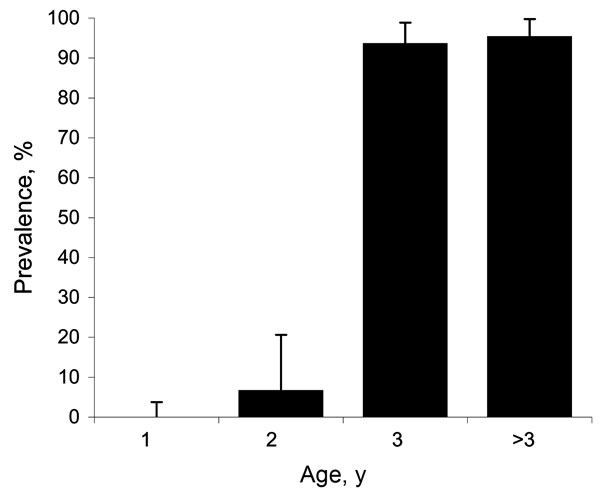Volume 16, Number 3—March 2010
Dispatch
Bluetongue Virus Serotypes 1 and 4 in Red Deer, Spain
Figure 1

Figure 1. Results of ELISA to detect bluetongue virus (BTV) viral protein 7 in 200 serum samples collected from red deer, Spain. Results from yearlings were negative; results from adults showed an age-increasing trend of contact with BTV. Bars represent 95% confidence intervals for prevalence (binomial exact, Clopper-Pearson).
Page created: December 14, 2010
Page updated: December 14, 2010
Page reviewed: December 14, 2010
The conclusions, findings, and opinions expressed by authors contributing to this journal do not necessarily reflect the official position of the U.S. Department of Health and Human Services, the Public Health Service, the Centers for Disease Control and Prevention, or the authors' affiliated institutions. Use of trade names is for identification only and does not imply endorsement by any of the groups named above.